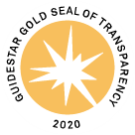As we wrap up the last week of May, we are going to highlight Ehlers-Danlos Syndrome Awareness Month. Ehlers-Danlos Syndrome (EDS) is a connective tissue disorder that primarily affects the skin, joints, and blood vessel walls. Connective tissue can be found in skin, muscles, tendons, blood vessels, organs, gums, eyes, and more. There are thirteen subtypes of EDS and are characterized by joint hypermobility (joints that stretch further than normal), skin hyperextensibility (skin that can be stretched further than normal), and tissue fragility. Basically, the connective tissue is not structured the way it should be. Some or all of the tissue can be pulled beyond normal limits which can cause damage.
Symptoms of EDS are most often joint and skin related:
- Joints – Loose and unstable joints which are prone to frequent dislocations, joint pain, and early onset of osteoarthritis.
- Skin – Fragile skin that tears, severe bruising, scarring, slow wound healing, and development of molluscoid pseudo tumors, which are fleshy lesions associated with scars over pressure areas.
EDS is very rare with fewer than 200,000 cases reported each year. There is no cure for it, and the treatment aims to prevent dangerous complications. Treatment varies by individual and depends on many factors, including the type of EDS and symptoms. To protect the skin, it is recommended to use sunscreen, mild soaps, and taking extra vitamin C to help reduce bruising. Physical therapy can help prevent joint injuries, and braces help stabilize joints. Doctors will monitor an EDS patient’s blood pressure and may prescribe medicine to keep it low and stable because the blood vessels can be fragile. Dislocated joints and other injuries are also common, so people with EDS should avoid heavy lifting, high impact exercise, and contact sports.
Many people with EDS do not “look sick” and this week we will share the story of one of our Kidd’s Kids who deals with this disease and does not feel well daily.
Information for this blog post came from The Ehlers-Danlos Society.


